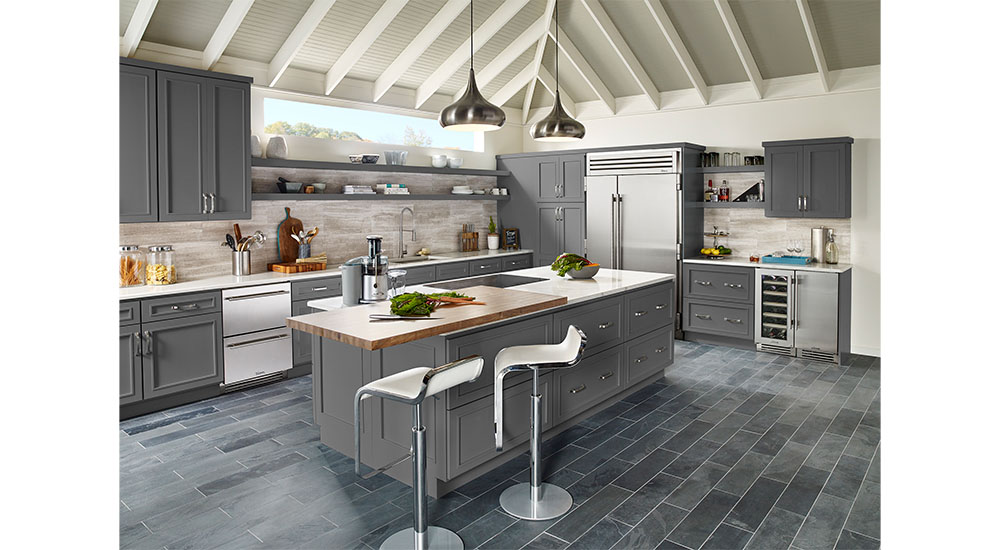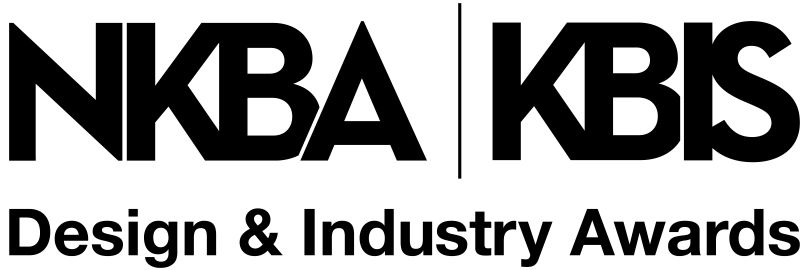The traditional kitchen work triangle – the well-worn principle that places the refrigerator, stove and sink at the vertices of an unobstructed triangle for optimal efficiency – has been a fundamental design concept for decades. Kitchens were once purely utilitarian spaces, designed to accommodate a single cook. While the idea has merit, modern kitchens have evolved into communal hubs, accommodating multiple cooks and showcasing an ever-expanding array of sophisticated appliances. In homes where entertaining and culinary creativity take the spotlight, it’s clear that the traditional kitchen triangle often falls short. The core principle of the kitchen work triangle remains valid: placing the key work zones (food storage, food prep/cooking and cleanup) within close proximity minimizes unnecessary movement and enhances workflow efficiency.
However, today’s luxury kitchens often go far beyond the basics of just a single refrigerator, range and sink. It’s not uncommon to see a full-size refrigerator column dedicated to fresh food, a matching freezer column, and specialized undercounter beverage centers, or wine cabinets, each designed to serve a distinct purpose. More homeowners are incorporating additional features such as second sinks or prep sinks, wall ovens paired with steam ovens, and cooktops equipped with integrated grills or induction zones. On top of that, the growing popularity of dedicated coffee and tea stations, specialized beverage dispensers, and cocktail prep areas highlights how the modern kitchen has evolved far beyond the simplicity of a traditional triangle. With these complexities, today’s kitchen designers have their work cut out for them.
An Expanded Palette of Appliances
High-end kitchens now regularly incorporate multiple refrigeration solutions to streamline food storage and beverage service. This might entail a full-size refrigerator near the primary food preparation zone, an undercounter beverage center in a central island or buffet area that offers quick access to chilled drinks, and perhaps a wine column in a more formal lounge or dining space. From a design perspective, each appliance functions as a unique “zone” in the kitchen ecosystem.

Rather than forcing everything to adhere to outdated rules, designers are increasingly embracing customized stations and zones tailored to their clients’ lifestyles. For avid artisanal coffee enthusiasts, this might mean creating a coffee bar complete with a smaller sink, undercounter refrigerator drawers for milks and cream and dedicated storage for beans and equipment. Similarly, for those hosting tastings or cocktail gatherings, a separate wine column or beverage station with its own prep surface and sink ensures that entertaining flows seamlessly without disrupting the main cooking area.
Multiple Cooks, Multiple Zones
Another factor highlighting the limitations of the classic kitchen work triangle is the increasing frequency with which multiple family members or guests share kitchen responsibilities. Cooking is no longer a solitary chore; it has evolved into a communal and educational experience. Parents guide their children in learning how to chop vegetables, couples collaborate on crafting elaborate meals and friends gather around the island to sip wine and chat as dinner takes shape. With more people navigating between the sink, fridge and stove simultaneously, the traditional triangle often feels overcrowded.
A practical solution is to design the kitchen in layers or activity clusters. For example, a “main prep” area might include a large island equipped with its own sink, cutting boards and convenient access to a central refrigerator. Meanwhile, the perimeter can house the primary cooking appliances, additional refrigerated drawers and a secondary sink designated for cleanup or extra prep work. This approach allows for the utilization of multiple overlapping triangles, each tailored to a different subset of tasks.
Flow and Flexibility
Remember, every home and household is unique. Modern kitchen design embraces the idea that the best spaces are tailored to the unique needs, habits and routines of the people using them. Large families who often cook together will benefit from extra elbow room and clearly defined prep areas, whereas avid entertainers may place a premium on beverage stations, staging areas for platters and a surplus of refrigeration to keep drinks chilled and hors d’oeuvres at the ready. Incorporating a broader suite of appliances can feel seamless with a well-thought-out layout. The key lies in establishing smooth “paths” for foot traffic and efficient item retrieval.

For instance, situate a beverage fridge or wine cabinet near the living or dining room, so guests can help themselves without interfering with the main cooking zone. Strategically place smaller undercounter refrigerators to minimize unnecessary back-and-forth between stations. For those who enjoy cooking with fresh ingredients, grouping a fridge column and prep sink ensures rinsing and chopping can happen smoothly in one convenient area.
Looking Beyond the Triangle
Ultimately, the kitchen triangle is a handy guideline, but it’s just that – a guideline. In today’s luxury kitchens, an environment that blends function, style and social engagement demands a more expansive design perspective. The new paradigm might be described as a series of complementary circles or “zones,” where each cluster of appliances and surfaces is optimized for a particular purpose – be it baking, steaming, mixing cocktails or simply gathering for conversation.
The modern approach is less about strict geometry and more about the fluid interplay between a home’s culinary aspirations and the appliances that help achieve them. With the proliferation of high-end cooking tools, specialized refrigeration solutions and the communal shift in how families and friends use the kitchen, embracing a more dynamic layout ensures that the space is both highly functional and beautiful. Yes, the classic kitchen work triangle remains a valuable foundation – but by expanding beyond those three points and incorporating unique, dedicated zones for multiple users and advanced appliances, you’ll design a kitchen that truly reflects the sophistication of a luxury home and enhances the experience of those who gather there.
—By Andrew Shead, Sales and Marketing Manager at True Residential








